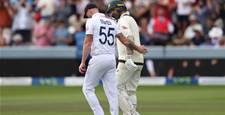Australia go into the series against India as massive underdogs but that doesn’t mean they should accept defeat before a ball is bowled.
India haven’t lost a Test match at home since 2012 and looked in ominous form against Bangladesh and England. Australia should look to emulate India and aim to bat as long as possible in the hope that they can grind India down.
Normally a side would aim to take 20 wickets to win a match but Australia should change that mindset for this series and aim to score more runs than India, or at the very least, bat more overs. Batting three days should be the aim in each match, as the longer Australia bat, the longer the match goes on, and the less time India have to win.
Australia lost in Sri Lanka because they were unable to bat for long enough. The bowlers, mostly because of Mitch Starc, did their job but the batsmen kept collapsing. Instead of trying to get different bowling options into the team, Australia should focus on making the batting line-up as long as possible to make the game go the distance.
The best chance of avoiding batting collapses is to pick six batsmen and a wicketkeeper. The idea of playing an all-rounder is counterproductive if it means having a number six who weakens the batting and only marginally strengthens the bowling. The top six needs to be the six best batsmen available.
In the squad picked for India, Australia don’t have an all-rounder who is better than the best six batsmen, and as such, one shouldn’t be picked. The batting order picks itself as the top five should be the incumbents, with Shaun Marsh coming in at six. Matthew Wade will take the gloves and will be expected to score runs at seven.
If Australia do want to experiment then the place to do that is with the bowlers rather than the batsmen. Starc and Josh Hazlewood are certainties though the thought of playing Mitch Marsh to open with Starc in place of Hazlewood should also be entertained at some point of the series. It would seem strange to drop Australia’s highest ranked bowler for an all-rounder but Hazlewood is unlikely to get the same help on Indian pitches as he gets on Australian pitches. Marsh might be able to fulfil a similar role with the ball while strengthening the batting at the same time.
All things being equal, Australia will pick two spinners. Nathan Lyon is the team’s number one spinner and will start, most likely alongside Steve O’Keefe as he played the last Test in Sydney and is seen as a steady option able to tie up an end. O’Keefe has a decent first class batting average as well so would give Australia a bit of extra insurance in the event of a collapse.
Regardless of who Australia pick, they’re going to struggle against India in Indian conditions, though that doesn’t mean the result is inevitable. Picking a side with the strongest possible batting line-up gives Australia the best chance of getting anything out of the series.
If lucky, Australia will win the toss in the first Test, bat first, then keep batting until it becomes boring.
Related Articles

Playing From The Tips Ep.112: PGA Championship

Review: Glenelg Golf Club













